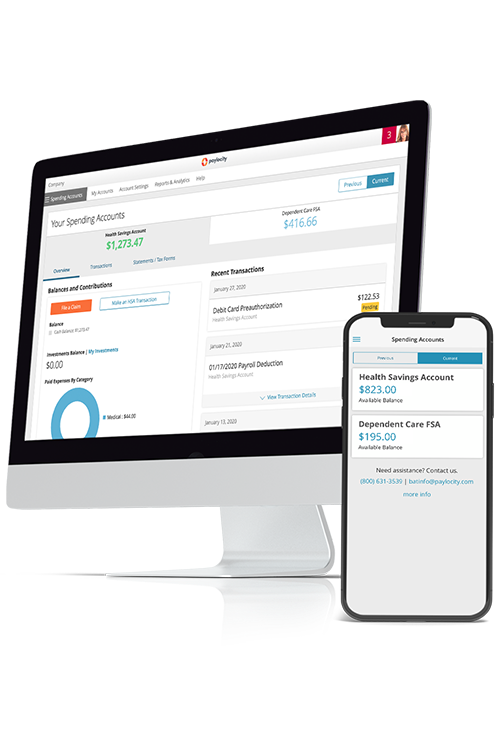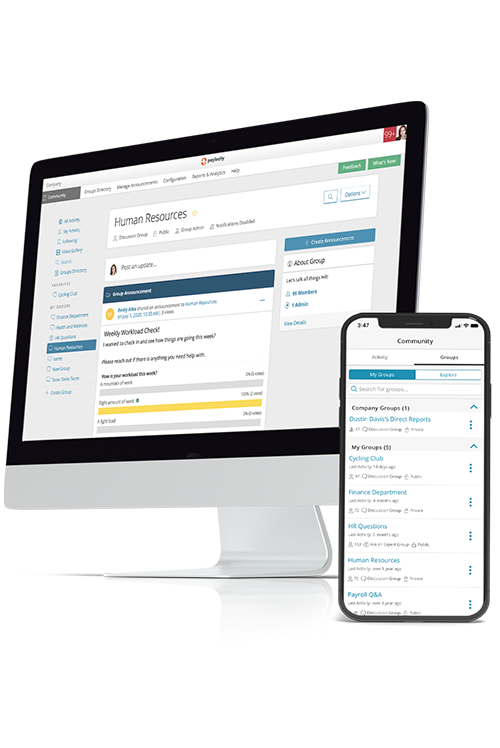resources
Employee Incentive Programs: 10 Ideas to Elevate Engagement
July 27, 2023
Employee incentive programs can increase sales and improve employee wellness. Here are 10 employee incentive program ideas and tips on how to implement them.
Blog Post

Skip to end of table of contents
Table of Contents
- What Are Employee Incentive Programs?
- Employee Reward Programs vs. Incentive Programs
- What are the Benefits of Employee Incentive Programs?
- Employee Incentive Programs that Still Work
- Building Incentive Programs for Remote and Hybrid Workers
- Work Incentives Programs Tips and Best Practices
- Leverage Incentive Programs to Motivate Employees
We’re all guilty of keeping one eye on the time when the end of a hard-working day draws near—it’s only natural.
But if you’ve started clock-watching from about 11 a.m., we’d be willing to bet you’re not as enamored with your job as you once were. And, if most of your workforce is similarly disengaged, your company has big problems.
Sadly, this does seem to be the case for many, with only 21% of employees reporting they are engaged at work. Worse still, this despondency costs businesses dearly — $7.8 trillion or 11% of global GDP in 2021.
So what can you do to shake things up and jolt your people out of waiting for the day to be over before it’s even begun? Implement employee incentive programs: a tried and tested method to combat workplace malaise.
A carefully-tailored combination of rewards and programs that align with your team's motivations and your company's values can dramatically affect employee engagement and morale.
There are many ways to implement employee incentive programs within your company. In this article, we will explain what they are, their benefits, and take a look at a few employee incentive ideas.
What Are Employee Incentive Programs?
Employee incentive programs reward team members for helping a business achieve its goals.
Companies can use a rewards scheme to motivate their employees, encourage positive behaviors, and elicit better performances. They can be monetary or non-monetary-based and double as a business tool to increase staff engagement and retention.
Incentive plans may be a simple concept but they offer a lot of flexibility. Businesses offer something employees want, and, in turn, it yields benefits for them. This strengthens the employee-employer relationship and helps promote overall success for the company.
Everybody wins!
Employee Reward Programs vs. Incentive Programs
Reward and incentive programs for employees are like ice cream and frozen yogurt. They’re both fantastic but aren’t exactly the same thing. While they’re similar concepts, they differ in critical areas like implementation and purpose.
Employee reward programs are sometimes referred to as recognition programs. Rewards are given to employees in recognition of their service, performance, achievement, or milestone. In other words, they’re rewarded for their past efforts. For example, a reward may be given for reaching the five-year employment mark or for hitting a monthly quota.
Employee incentive programs, on the other hand, are more proactive and objective-driven. Incentives are used to encourage team members to take specific actions or meet specific goals. Team members change how they work or adopt new behaviors to gain something back.
What are the Benefits of Employee Incentive Programs?
Where do we even begin? There are so many upsides to adopting an employee incentive program that you’ll wonder how you ever managed without one:
- Better inclusion. Employees who feel part of the team will be more likely to engage in their role and the company culture itself. Don’t believe us? 87% of employees report a high level of inclusion in their company when there’s a strong culture of recognition.
- Improved morale. Unhappy and lukewarm team members are like fair-weather joggers on a rainy day; they find it hard to go the extra mile or maintain high effort levels. Employee incentive programs can turn them into hardcore cross-country runners who laugh in the face of torrential downpours. That’s a long way of saying happy, engaged employees are more motivated to excel in their roles.
- Increased engagement. We all love the warm sense of satisfaction that comes with being recognized for our efforts. An employee incentive program can help your company leverage that feeling. And the numbers don’t lie; a “culture of recognition” can increase employee engagement by 250% and increase employee retention by 300%.
- Higher productivity. When employees are content and fully on board, they’ll perform their jobs better. This will lead to greater productivity across all areas of the business.
- Attract and retain talent. You’re an HR professional. We don’t have to tell you about the challenges of recruitment. Incentive programs help give you a competitive edge. Not only do they incentivize and make your existing employees less likely to look for work elsewhere, they can also be the deciding factor that sees you secure, or lose, a top applicant.
- Increased collaboration. Incentive programs motivate teams to work together to achieve specific goals.
- Better culture. Company culture has to be more than words. With employee incentives, you’re putting your money where your mouth is and supporting your team. Both monetary and non-monetary incentives demonstrate a culture that rewards desired behavior and outcomes.
Employee Incentive Programs that Still Work
If you think outside the box, you can probably come up with limitless company incentive programs. It might be better to start simple. Let’s look at some tried and true examples of employee incentives:
Recognition and Rewards
People love being recognized for their efforts, whether it’s completing a project on time or securing a new client. A recent study found when employees are recognized, they’re 2.7 times more likely to be “highly engaged” with their employer.
Using tools like Paylocity’s peer recognition software is a brilliant way to acknowledge your people. It enables managers and colleagues to “shout out” one another in real time.
You can take things up to another level by using points-based rewards. Employees are rewarded a predetermined amount of points depending on what activities or actions are involved. Essentially, you provide a rewards catalog where employees can spend points as they wish.
Profit Sharing
Profit sharing basically means if the business makes more money, your employees make more money. These types of staff incentives can generate a huge uptick in engagement and are especially effective at motivating sales-related activities.
When your team knows positive business growth is directly related to their own financial situation, they’ll fully buy in. Profit sharing is a big hit with employees because it empowers them to become part of the company.
While they aren’t shareholders, they will have the same vested interest in seeing increased profits. Depending on the nature of your business and your team, you can incentivize based on the performance of individual employees, teams, or company-wide profits.
A less expensive way to add this incentive type is to partially or fully match employee 401(k) contributions with profit sharing.
Learning and Development
Would you rather be given $1,000,000 right now or go back to the age of 18 with the knowledge you currently have?
That question is more of a headscratcher than it first seems. After all, think of what you could do with all you’ve learned at a younger age. It speaks volumes about the value of learning and development
With this in mind, you can engage your employees with learning and development incentives in several ways. Build bespoke programs that let you promote company culture and house them in a learning management system for easy access in perpetuity. Or, use a third-party option to offer courses, certifications, and other upskilling opportunities.
Another option is to create coaching programs or mentorships. In most cases, the learning itself is incentive enough. In fact, Gen Z (44%) and Millennials (36%) would spend more time learning if they were recognized by their manager.
Referrals
Everyone in the business-world knows the value of word-of-mouth marketing, and not just in sales. Word travels fast when it comes to headhunting the best talent too.
Need proof? Statistics show referrals are five times more likely to be hired, and 45% of those hires will stay employed for more than four years.
Employee referral programs allow you to build your talent pool while recognizing your team for the extra effort. An easy way to build a referral incentive program is to offer tier-based rewards, which increase in value the further a recruited candidate goes.
For example, an incentive could be a gift card that scales: $20 for an applicant, $50 for an interview, and $100 for a hire. You can also tap into a healthy competitive spirit and gamify your referral program with referral tracking software.
Wellness Incentives
If you take care of your people, they’ll take care of you.
Wellness programs incentivize talent to come to you and stay for a long time by offering things like meditation retreats, standing desks, fitness classes, and bike-to-work reimbursements.
The wellness incentive approach may not be directly tied to a business's goals (i.e., job KPIs and business revenue), but underestimate it at your peril.
By providing wellness incentives, you are promoting the overall health of your team. The reward for your business is that your employees will be better prepared and set up for success.
And they’re fun! You can promote a little healthy competition by using activity-tracking apps and/or tools like pedometers. Encourage employees to share their progress on a social collaboration hub for an extra engagement boost.
Stock Ownership
It doesn’t matter if you’re Amazon, Microsoft, or a fledgling sales company; getting in on the ground floor is an incredibly appealing prospect and a strong motivational tool for your people.
Offering company stock can be an alternative to profit sharing if your resources are limited. Upfront, it’s a much less expensive monetary incentive that enthuses and engages your team. Similar to profit sharing, employee stock ownership plans (ESOP) instantly align your team with business goals.
Typically, you’ll offer stock at a discount rate that employees can buy at predetermined times in limited quantities. When employees have equity, they’re more likely to go above and beyond. Being financially invested in the company also promotes the loyalty of your employees.
Tuition Reimbursement
Student loan debt is a growing problem in the U.S. So imagine how appealing your company would be if it offered its people money to continue learning.
Tuition reimbursement programs let you turn potential tax payments into employee incentives that attract top talent. They work in a similar way to the learning and development incentives we mentioned earlier—you promote the further education of your team and reap the benefits.
The proof is in the pudding; 82% of people found continued education through a reimbursement program made them more effective employees. And 76% stated the program made them more likely to remain at their organization.
Fringe Benefits
Fringe benefits are extra perks or compensation added on top of your employee’s regular salary. There are required benefits (e.g., health insurance and worker’s compensation) but you can stand above the competition by offering optional fringe benefits.
These can include retirement plans (401(k)s), ESOPs, paid time off (PTO), meal subsidies, club memberships, and other perks.
Fringe benefits help you attract top recruits who are looking for more than just a competitive salary. PTO is a real winner, with 31% of employees naming paid time off as their top benefit. And 26% of employees would quit their current job for access to better benefits.
Take advantage of benefits administration software to automate the delivery of custom fringe incentives that motivate your employees.
Travel Incentives
Travel incentive programs are a great way to appeal to your employees suffering from a bit of wanderlust.
Use regular department meetups, especially if your organization is remote, to promote team-building by providing a shared memorable experience at a fun destination. You can even reward your top performers with a trip to an enviable tropical destination as a means of incentivizing good work and recognizing star talent.
Travel incentives in the workplace are a good way to offer a fun reward that may appear worth much more than the actual costs. You can use a corporate travel agent to find great deals for popular destinations.
Team-Based Incentives
Incentivize your employees by offering group-based rewards. You can set goals for individuals or set targets that everyone in a department or company-wide can achieve as one unit.
For example, your outbound sales team can have a total sales target to achieve as a whole. If they hit this target, they get an outing of their choice. It could be anything from a camping retreat to paintballing to an after-work hangout at the local bar. These types of incentives encourage collaboration over competition.
Building Incentive Programs for Remote and Hybrid Workers
You can approach remote and hybrid incentive programs from two different angles.
The first step is to identify initiatives that target your work-from-home team members. Motivating factors will vary with individuals. Some remote employees will crave a meetup incentive to familiarize themselves with their peers. Others may prefer recognition via social proof, like impressions and shoutouts.
These types of incentives help to normalize the experience of working in the company despite not physically being present.
You can approach this from the other side of the spectrum, too, by having remote and/or hybrid working as the incentive itself. It’s a tried and tested strategy, with 97.6% of employees who’ve worked remotely saying they wish to continue doing so (at least partially) for the rest of their careers.
By incentivizing flexible working, you can better retain employees. You can also motivate them to hit targets and milestones to widen their remote work opportunities.
Work Incentives Programs Tips and Best Practices
It’s easy to get lost in the vast incentive program universe. As soon as you start looking at one idea, it seems to spill over into several others. With this wealth of options available, you can probably find a combination of approaches that suits your business.
However, implementing incentive programs is a different ballgame. You need to follow practical advice to see your plan through to achieving its goals.
Make Your Program Inclusive
Different areas of your business may necessitate specific programs. In other cases, incentives may work across the board. The goal is to build systems that generate the desired results. Your main variables will be the employee objectives and the incentives themselves. However, you can’t forget that everyone comes from different backgrounds.
A Gallup study found authentic recognition was nearly twice as effective in promoting belonging for Black and Hispanic employees as for white employees. If you’re not getting input from underrepresented groups within your organization, your incentive programs are shallow.
Make sure you aren’t setting your team up for demotivating failure. Also, be sure you’re offering incentives to appeal to everyone. Include your entire team by getting employee feedback during the incentive program planning process.
Use employee surveys to continue monitoring the overall appeal and inclusion of your incentive programs.
Personalize Incentives
It’s crucial for the success of your recognition and reward programs to allow for at least a semblance of personalization. Whether it’s offering alternatives, tiered incentives, or rechargeable credit cards, you want your team to be empowered by choice.
Always remember that each individual will have their own preferences. If incentives are too homogeneous, many employees will slip through the cracks and disengage. You can help yourself in this area by using incentive platforms to garner employee interest and promote incentive personalization for your programs.
Lead by Example
In business, every initiative starts at the top. Incentive programs are no different. There’s a correlation between leadership and employee engagement, so managers and decision-makers need to be actively involved in both leading and participating in your rewards programs.
At a tactical level, this starts with the training and socializing of new programs with leaders. Make sure your managers are familiarized with any platforms or engagement tools involved.
After your leaders are fluent with the ins and outs, they can actively promote the program and its rewards for all of your employees.
Leverage Incentive Programs to Motivate Employees
Employees want to work for companies that understand their needs and offer more than just a salary. But they're not necessarily asking to be given more for nothing. They’ll crank up productivity and go the extra mile if the price is right.
It’s up to you to craft the best employee incentive programs that dazzle and delight top talent. Tailor your initiatives to your organization, and reap increased engagement, improved retention, and business goals.
To make implementing your incentive programs easier, consider Paylocity. Our all-in-one HR and payroll solution includes tools that facilitate recognition and rewards, such as:
- Impressions, for easy and customizable peer recognition.
- Community, for getting the word out about your incentive programs and providing a platform for your staff to engage.
- Benefits administration, for hassle-free benefit enrollment.
- Learning, for curated on-demand professional development opportunities.
Request a demo today to learn how Paylocity can streamline and elevate your corporate incentive programs.




